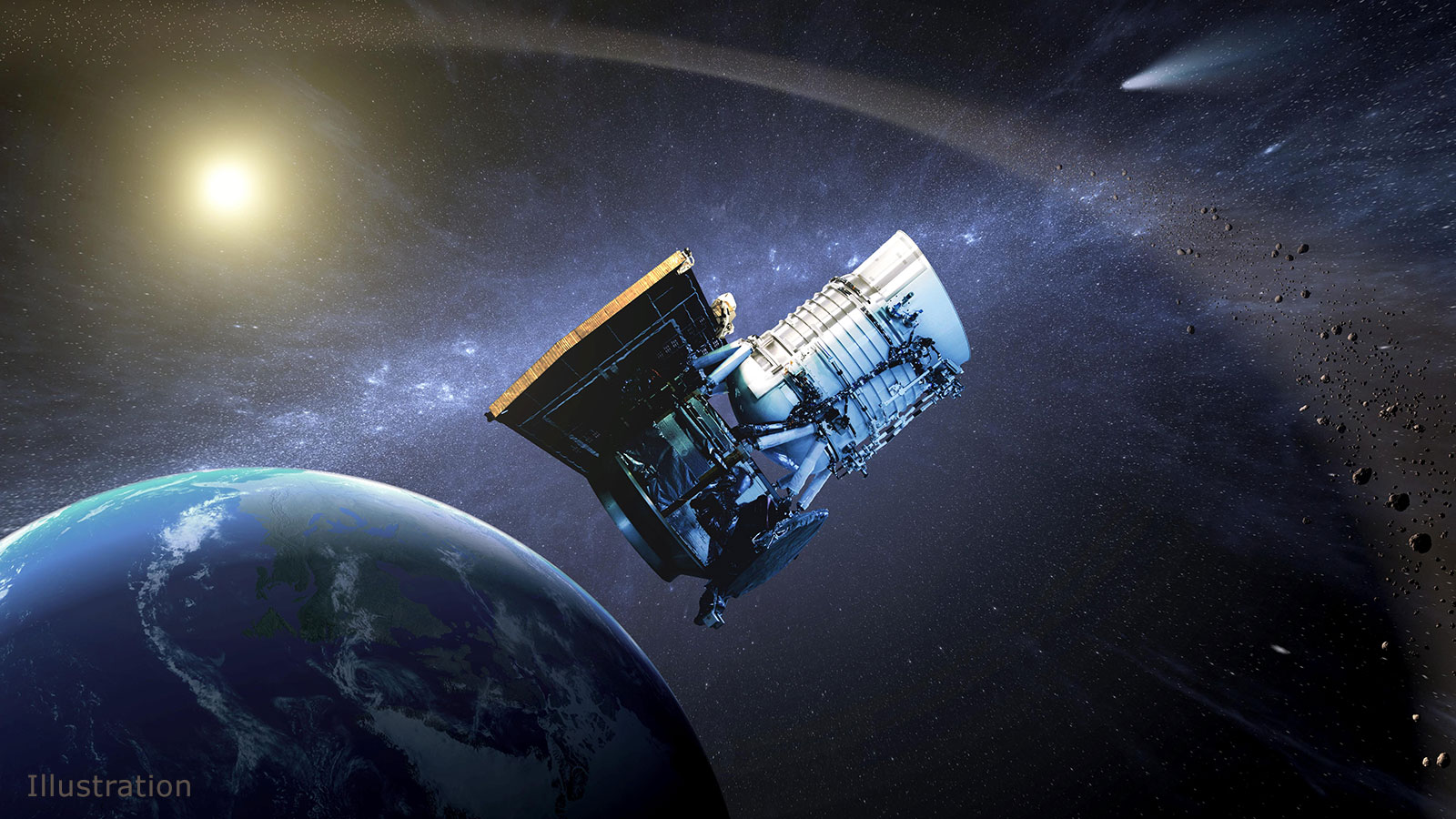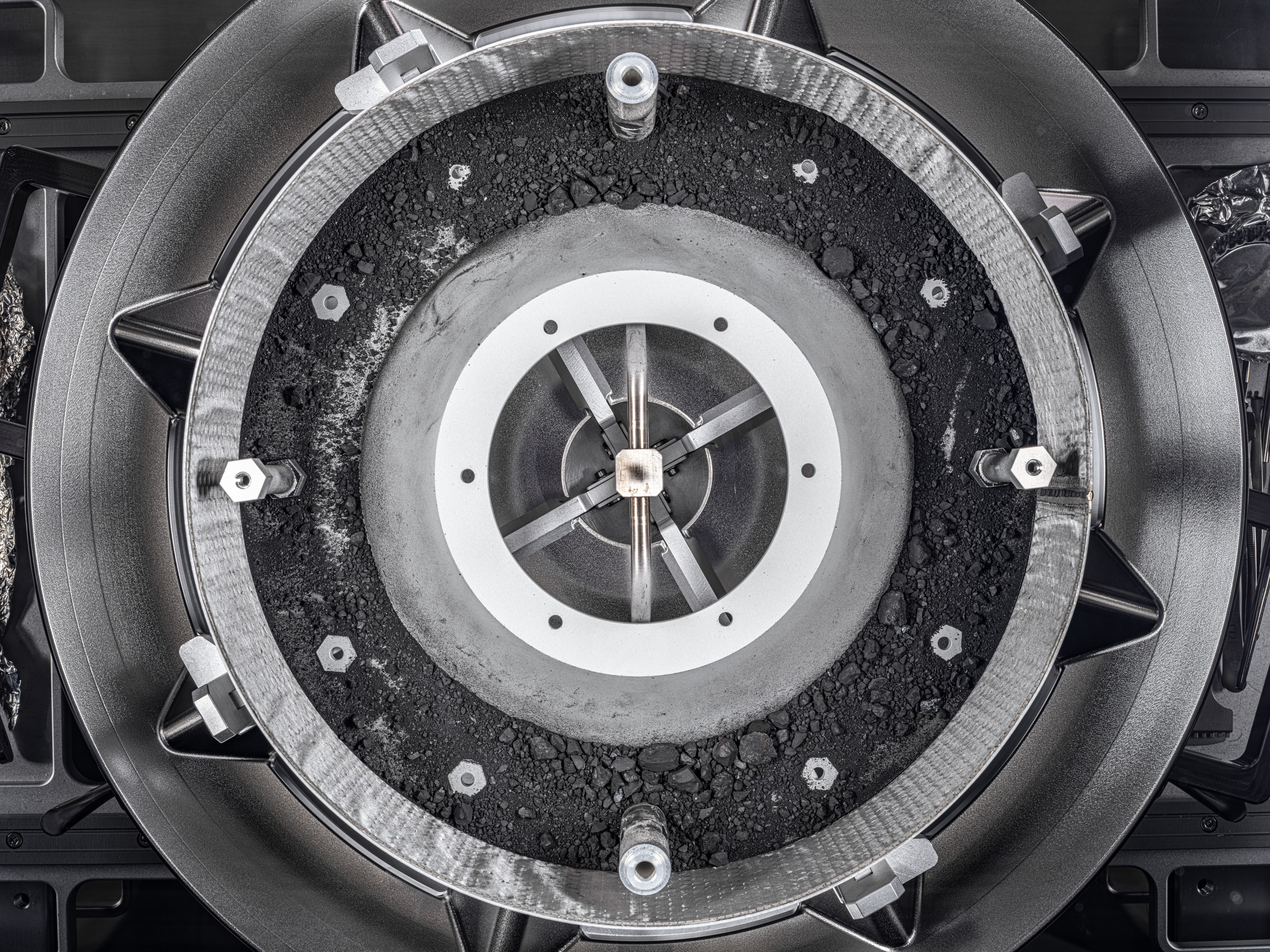4 min read
Donald Savage
Headquarters, Washington, DC
(Phone: 202/358-1547)
RELEASE: 01-20
The NEAR Shoemaker spacecraft's historic soft landing on asteroid 433 Eros Feb. 12 turned out to be a mission planner's dream - providing NEAR team members with more scientific and engineering information than they ever expected from the carefully designed series of descent maneuvers.
"We put the first priority on getting high-resolution images of the surface and the second on putting the spacecraft down safely - and we got both," says NEAR Mission Director Dr. Robert Farquhar of the Johns Hopkins University Applied Physics Laboratory in Laurel, Md., which manages the Near Earth Asteroid Rendezvous (NEAR) mission for NASA. "This could not have worked out better."
Two days after a set of five de-orbit and braking maneuvers brought it to the surface of Eros, NEAR Shoemaker is still communicating with the NEAR team at the Applied Physics Lab. The spacecraft gently touched down at 3:01:52 p.m. EST on Monday, ending a journey of more than 2 billion miles (3.2 billion kilometers) and a full year in orbit around the large space rock.
Yesterday the NEAR mission operations team disabled a redundant engine firing that would have been activated had it been necessary to adjust the spacecraft's orientation in order to receive telemetry from it. But because NEAR Shoemaker landed with such a favorable orientation, and telemetry has already been received, it was no longer necessary to move the spacecraft from its resting place.
Mission operators say the touchdown speed of less than 4 miles per hour (between 1.5 and 1.8 meters per second) may have been one of the slowest planetary landings in history. They also have a better picture of what happened in the moments after the landing: What they originally thought was the spacecraft bouncing may have been little more than short hop or "jiggle" on the surface; the thrusters were still firing when the craft hit the surface, but cut off on impact; and NEAR Shoemaker came down only about 650 feet (200 meters) from the projected landing site.
"It essentially confirmed that all the mathematical models we proposed for a controlled descent would work," says Dr. Bobby Williams, NEAR navigation team leader at NASA's Jet Propulsion Laboratory. "You never know if they'll work until you test them, and this was like our laboratory. The spacecraft did what we expected it to do, and everyone's real happy about that."
NEAR Shoemaker snapped 69 detailed pictures during the final three miles (five kilometers) of its descent, the highest resolution images ever obtained of an asteroid. The camera delivered clear pictures from as close as 394 feet (120 meters) showing features as small as one centimeter across. The images also included several things that piqued the curiosity of NEAR scientists, such as fractured boulders, a football-field sized crater filled with dust, and a mysterious area where the surface appears to have collapsed.
"These spectacular images have started to answer the many questions we had about Eros," says Dr. Joseph Veverka, NEAR imaging team leader from Cornell University in Ithaca, N.Y., "but they also revealed new mysteries that we will explore for years to come."
NEAR Shoemaker launched on Feb. 17, 1996 - the first in NASA's Discovery Program of low-cost, scientifically focused planetary missions - and became the first spacecraft to orbit an asteroid on Feb. 14, 2000. The car-sized spacecraft gathered 10 times more data during its orbit than originally planned, and completed all the mission's science goals before Monday's controlled descent.
"NEAR has raised the bar," says Dr. Stamatios M. Krimigis, head of the Applied Physics Laboratory's Space Department. "The Laboratory is very proud to manage such a successful mission and work with such a strong team of partners from industry, government and other universities. This team had no weak links - not only did we deliver a spacecraft in 26 months, we were ready to launch a month early, and that efficiency continued through five years of operations. This is what the Discovery Program is designed to do."







